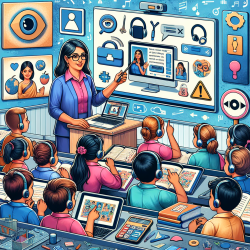Introduction
In our quest to create inclusive environments for all children, especially those with low vision, understanding and implementing effective signage standards is crucial. A recent study titled Rethinking ADA Signage Standards for Low-Vision Accessibility sheds light on how current standards fall short and offers innovative solutions to enhance accessibility. At TinyEYE, we are committed to utilizing research-driven insights to improve our online therapy services and support schools in creating accessible learning environments.
Understanding the Shortcomings
The Americans with Disabilities Act (ADA) and the International Code Council (ICC) standards are pivotal in ensuring accessibility in public spaces. However, these standards often fail to adequately address the needs of individuals with low vision. The research highlights that simply increasing letter size or contrast is insufficient for ensuring visual accessibility. Instead, the focus should shift towards the functional distance at which a sign can be read by someone with nominally normal vision under expected lighting conditions.
Proposed Solutions
The study proposes two key remedies:
- Functional Distance-Based Standards: Signage requirements should be based on the distance at which a person with 20/20 vision can read the sign under typical lighting conditions. This approach allows designers more flexibility while ensuring legibility.
- Consistent and Approachable Sign Placement: Directional signs should be mounted in predictable and easily accessible locations, enabling individuals with reduced acuity to view them at a close distance.
Implications for Practitioners
For practitioners in speech-language pathology and educational settings, integrating these insights can significantly enhance the accessibility of learning environments. Here’s how:
- Advocate for Change: Use your voice to advocate for the adoption of these proposed standards in your school or district. Highlight the importance of functional distance-based signage in IEP meetings and accessibility planning sessions.
- Collaborate with Designers: Work closely with designers and architects to ensure that new signage installations or renovations meet the proposed standards. Your expertise in understanding the needs of children with low vision can guide effective design choices.
- Educate Stakeholders: Educate teachers, administrators, and parents about the importance of accessible signage. Share research findings and practical examples of how improved signage can enhance the learning experience for students with low vision.
Encouraging Further Research
While the study provides a robust framework for improving signage standards, ongoing research is essential. Practitioners are encouraged to engage with current research, contribute to studies, and share findings with the broader community. By staying informed and proactive, we can continue to drive positive change in accessibility standards.
To read the original research paper, please follow this link: Rethinking ADA signage standards for low-vision accessibility.










